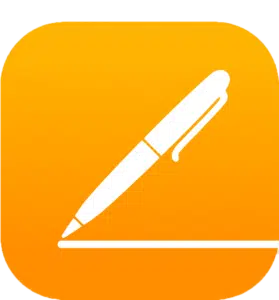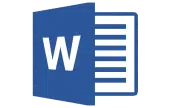According to Glassdoor, the average hiring timeline in the United States can take around 23.8 days.
The lengthy process can prove tedious on the employer’s end. Hiring managers go through several applicants while attempting to maintain equal opportunity in the application process.
Despite that, an extensive interview process reaps more benefits than one with few background checks and questions.
Every step is vital when choosing the most well-suited and qualified candidate.
What is the Best Interview Process?
Multiple types of interviews serve a particular purpose. It primarily depends on factors like the industry, role responsibilities, and goals.
Structured Interview
As their name suggests, structured interviews are best for collecting statistical data to compare candidates for a role. It involves asking fixed questions in a structured format, translating to a final scoring system.
It offers a consistent interview with minimal error and collects the most relevant information. Researchers created this interview process for quantitative and qualitative data collection.
Now, it’s gaining popularity in the employment process.
Unstructured Interview
Unlike the structured interview process, its unstructured counterpart carries little to no directive. The on-the-spot nature of the questions promotes an open-ended conversation.
Employers use this type of interview to reduce the stress associated with the hiring process.
The downside to unstructured interviews is that the discussion topic may become irrelevant. It also takes more time to capture the necessary information.
Another critical disadvantage is that it could trigger an unconscious bias from the interviewer and lead to an unfair and uncalculated hire.
Semi-Structured Interview
A semi-structured interview combines a structured interview’s consistency and an unstructured interview’s flexibility. It addresses a structured interview’s rigidity by allowing interviewers to ask more open-ended questions.
Semi-structured interviews are challenging to record, despite their balanced approach.
It also requires extensive expertise on the interviewer’s side to maintain consistency. They’ll need to understand cues of when to switch from structured to unstructured formats.
Behavioral Interview
Behavioral interviews emphasize the interviewee’s past experiences.
Hiring managers ask potential candidates how they reacted during particular cases to analyze their thought processes. It lets employees gain a broader scope of the potential employee’s work attitude.
One con to this interviewing technique is that employees rehearse their answers. In turn, they usually have a prepared and inauthentic response.
For this reason, employers tend to use this interview process for excluding rather than hiring candidates.
Situation Interview
Situation interviews seem similar to behavioral ones, but they differ. The prior highlights hypothetical situations rather than past instances.
It offers the same advantage as structured interviews, where you have set questions and compare answers.
Virtual Interview
Virtual interviews don’t take place in person. Employers use video conferencing tools to conduct the interview.
The best part about virtual interviews is that they’re less time-consuming and less costly for the candidates.
Although it offers convenience, it may be inaccurate in deciphering a candidate’s body language. Potential employees may feel uncomfortable while being recorded, which affects their candidacy.
Another crucial disadvantage is the chance of experiencing technical issues.
Group Interviews
Group interviews place several candidates applying for the same role in the same interview. The hiring manager asks them similar interview questions and simultaneously assesses them.
The interview decreases cost and time on the employer’s end. It suits a role that needs teamwork.
Otherwise, it can cause conflicts between incompatible candidates. Some potential employees will feel out of their element, hindering their chances.
Skill Test Interviews
Skill test interviews involve testing the employee on their technical skills. It’s particularly well-suited to jobs in the tech industry. They’re unbiased, factual, and accurately assess the hard skills.
The interview technique is diverse, where you can implement creativity, critical thinking, communication, or collaboration tests.
What Are the Steps in the Interview Process?
As a hiring candidate, you can break down the interview process into six steps.
Initial Application
The initial application is when candidates submit their interest to the hiring company. Employers are patiently waiting for potential employees to respond to their job ads.
It’s a passive process. Despite that, it can also sort out unqualified applicants through a yes or no application test.
Follow-Up Phone Call
A follow-up phone call after applying is usually unnecessary. You should wait until the employer contacts you first.
The follow-up phone call applies if you have inquiries about the interview, such as the dress code, certifications, or resources needed.
Don’t call if you’re asking about the company or the role. Reserve those questions for the interview.
Interview
Reaching the interview step is an accomplishment. Only about one in five candidates get an interview invitation.
You’ll want to take time to prepare for it by going through common interview questions using the STAR method. It answers each question by mentioning the situation, task, action, and result.
Be prepared for every interview type if it goes unspecified by the hiring manager.
Next Round of Interviews
A second interview is a positive sign. Your employer wants to see how you’ll fit into the company culture. You have a one in four chance of earning a spot in the second interview.
After recognizing your accomplishment, it’s time to get even more committed. The competition between other candidates is now fiercer.
You need to prepare your knowledge about the company and practice impeccable interview etiquette.
Follow-Up
After you complete the interview phase, you can follow up with the hiring manager after five to eight business days. You don’t want to contact them before then, or you’ll come off as unprofessional.
When following up, you can send an email first thanking the employer for their time. Then, state the purpose of the email, followed by restating your interest in the role.
Finish my asking for any updates regarding the position and that you appreciate any information they can provide at the time.
Hear Back from Employer
At the final stage, you’ll know if you’ve got the job. If you get accepted, the employer will likely email you an offer. It’ll include the position, benefits, terms and conditions, salary, and compensation.
Before accepting the offer, be sure to analyze it for any inconsistencies. If you didn’t hear back from the employer, you likely need to move on with your job search.
Interview Process Steps for Employers
As an employer, you’ll want to familiarize yourself with all the steps in the interview process on your end.
Choose the Job Requirements
When creating the job ad, you need to list the requirements. They can include the position’s:
- Skills
- Work Experience
- Education Level
- Technical Knowledge
- Accreditation
- Licenses
- Certifications
- Personality Traits
Come Up With Questions to Evaluate the Requirements
After crafting your ideal candidate’s persona, you need to know how to evaluate their skills, knowledge, and attributes.
You can ask questions like, “Walk us through your decision-making steps” or “Describe a challenge you faced in your past work experience and how you handled it.”
The questions also depend on whether you’re assessing their hard or soft skills.
Conduct Initial Interviews
The first interview can be virtual if the candidate pool is still bulky. Online meet-ups are also more cost-effective and time-efficient.
You can know more about the candidate’s work style, experience, personality, and ambitions. The initial interview allows you to slice off a portion of unqualified candidates.
Schedule In-Person Interviews
You likely have your eyes set on some applicants by now. After doing a bit more background check on them and approving them for the next phase, you can contact them for the second interview.
Schedule and email them the details of the second interview. You can provide them with an agenda for it.
Conduct Interviews
The stage involves an in-depth analysis of each candidate. You’ll probe them with questions regarding their work history, style, expectations, availability, and overall ambitions.
It allows you to compare each candidate, especially if you’re following a structured format. You can also assess their technical skills to determine their qualification.
Schedule Follow-Up Interviews
By this stage, you know the candidates are well-qualified for the role and want to see how they fit in with the company’s work culture.
The workaround for this scheduled follow-up interview depends on the seniority of the job.
For instance, when hiring a junior marketing analyst, you’ll want to introduce them to the marketing team and direct manager.
Come Up With a Rating
An interview rating scale provides a guide to measure each candidate’s skill set, qualification, and overall aptitude for the position.
Creating the rating will help differentiate your candidates and ease the picking process. It helps reduce unconscious bias and gives a fair chance.
Contact Candidates
The final stage is when you make up your decision on which candidates you’ll hire.
Afterward, email them a job offer with the agreed-upon benefits and compensation. Be ready to answer any follow-up questions.
How to Describe the Interview Process
Your interviewees may inquire about the interview process to be better prepared.
You can describe the process by first mentioning what type of interviews you implement, whether it’s a structure, behavior, skill test interview, or all of the above.
Employers can email their candidates the expected open-ended questions. They may take them through the entire process.
For example, George wants to hire an accountant. He posts a job opening on LinkedIn and gets a few applicants.
Some of them have responded with queries about the interview process. It’s up to George to explain that the interview will involve
- Technical skills test
- Initial structured virtual interview
- In-person interview
George can also be transparent about the scale he will use to measure the candidate’s qualifications.
How to Improve the Interview Process
Using our interview tips and tricks, you can enhance your hiring process and increase your company’s chances of employee retention.
Hone in on Most Effective Questions
As an interviewer, you need to guide the interview. It should veer into a productive and informative path.
Skilled employers effectively extract as much relevant information from candidates as possible.
You can apply a top-down approach by asking broad questions before zeroing in on the details and short-answer questions.
Set Up a Realistic Timeline
Several factors impact an interview’s timeline, such as the volume of candidates, position level, and number of hiring managers involved.
Based on these aspects, you need to build a realistic timeline. For instance, you can provide one week for each step if the number of candidates exceeds expectations.
Agree on an Evaluation Method
Finding the most effective evaluation method can save you a lot of trouble when determining a candidate’s qualifications.
It can be a standard cognitive, personality, language, software, situation, or other role-specific skill evaluation. Overall, you’re evaluating skills to compare candidates.
Figure Out a Way to Test Technical Skills
Whether it’s a role in finance, tech, or engineering, you should test the candidate’s technical skills.
Technical tests can cover various topics, such as spatial reasoning, verbal comprehension, numerical knowledge, and visual acuity.
You can test the candidate using an online assessment, face-to-face interview, or a coding test.
Assess the Process Fix Prob
After going through the interview process once or twice, you’ll likely notice some hitches. Analyze these issues and figure out ways to prevent them. For instance, you may observe interviewers expressing a bias.
You can fix this issue by incorporating a scale and a more standardized approach to the interview, such as structured questions.
Frequently Asked Questions
What is the Rule of 5 in an Interview?
The 5% rule stipulates that HR specialists should aim to hire the top 5% of the candidate pool.
When hiring, companies look for productivity, knowledge, and experience rather than the volume of employees. That percentage consists of candidates that displayed the highest quality.
What is the Format of an Interview?
The format of an interview is the method an employer chooses to organize the hiring process.
Employers try to find the most effective way to assess their candidates’ experience level, qualifications, and skills.
The format usually depends on the role’s industry and requirements. For example, a teacher role may require a mixture of the situation and behavior interview.
Wrapping Up
Interview processes vary across each industry and company. It can go as long as four to five interviews offered by the tech giant Microsoft or as short as one walk-in.
The process usually begins with a job ad and application. It can go to a virtual, phone, or in-person interview after. As an employee, you may also face technical assessments to measure your hard skills.
Lastly, the interview concludes with a job offer or rejection. Let us know if you have any questions in the comments below.
Whether you follow a structured, semi-structured, or unstructured process, each interview involves an evaluation of the candidate’s qualifications and compatibility with the position.









